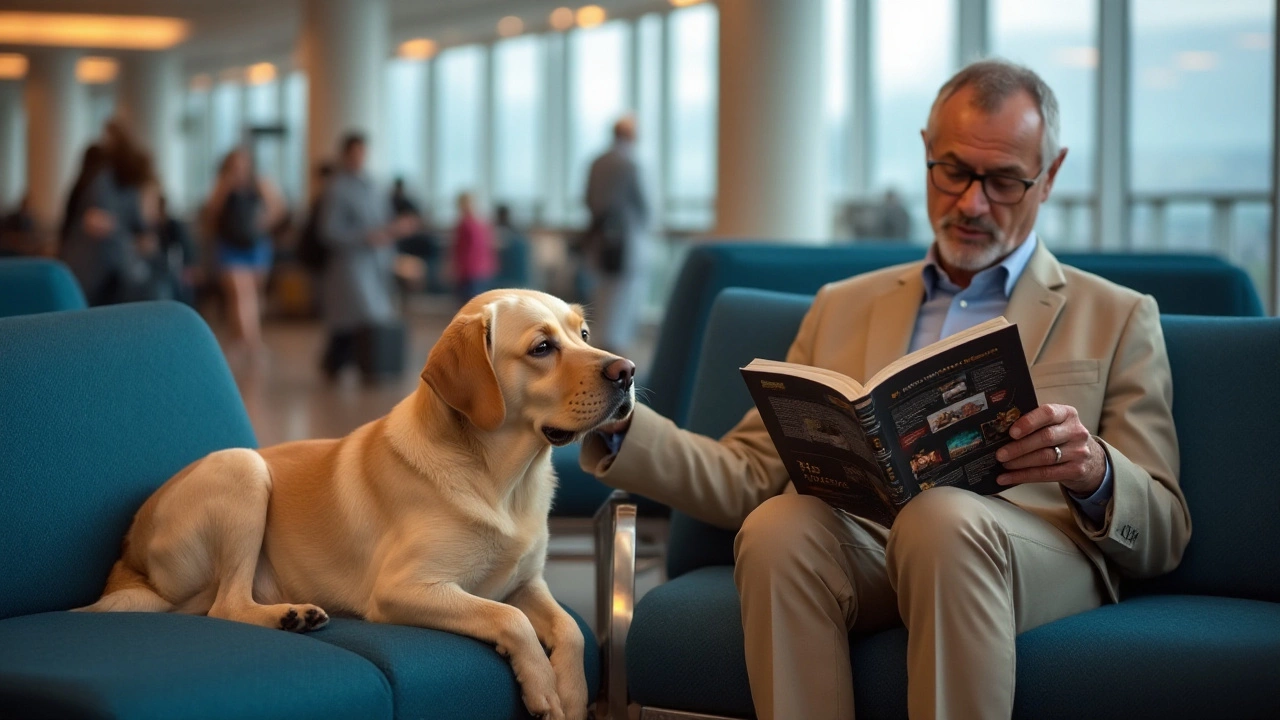Air Travel with Pets: What You Need to Know
Taking a dog or cat on a plane can feel like a circus, but it doesn’t have to be. With a few smart moves you can keep your pet calm, avoid surprise fees, and land without drama. Below we break down the money side, the rules airlines follow, and the step‑by‑step prep that makes the whole trip smoother for you and your furry friend.
Costs and Airline Policies
First thing’s first: expect a fee. Most UK carriers charge anywhere from £15 to £60 for a pet in the cabin and a higher charge for cargo‑only trips. Some low‑cost airlines even ban pets in the cabin, so double‑check before you book. Remember that the price often includes a carrier that fits under the seat, but you may need to buy an airline‑approved one if your pet’s crate is too big.
Every airline has its own paperwork. You’ll need a recent health certificate (usually within 10 days of travel), a microchip scan, and proof of up‑to‑date vaccinations. If you’re heading out of the UK, a pet passport or an EU pet health certificate becomes mandatory. Keep all documents in a folder you can pull out at check‑in – gate agents love a smooth process.
When you book, tell the airline early. Most carriers limit the number of pets per flight, and spots fill up fast. Some let you add the pet online; others require a phone call. Booking early also gives you a better chance at a front‑row seat where the cabin temperature is more stable.
Preparing Your Pet for the Flight
Start acclimating your pet to its carrier two weeks before departure. Put a comfy blanket, a favorite toy, and a small water bottle inside. Let them explore the crate at home, feeding meals inside to create a positive link.
On travel day, give a light walk about two hours before you head to the airport. A bathroom break right before security reduces the chance of an emergency mid‑flight. Avoid feeding a big meal right before you go – a small snack an hour earlier is enough to keep their belly settled without risking nausea.
At security, you’ll be asked to pull the pet out of its carrier while the carrier goes through the X‑ray. Stay calm, speak soothingly, and keep a hand ready to steady your dog if they get nervous. Once through, place the carrier back under the seat and keep the door secured.
During the flight, check on your pet occasionally but try not to open the carrier unless it’s an emergency. Cabin temperature can drop a bit, so a light blanket helps. Offer a sip of water if the flight is longer than two hours, but don’t over‑hydrate – a small lick from a damp cloth works fine.
When you land, give your pet a good stretch and a bathroom break outside the terminal. If you’ve traveled in cargo, follow the airline’s instructions for claim‑off points and allow extra time for customs paperwork.
Bottom line: plan ahead, know the fees, get the right paperwork, and make the carrier a comfy spot. With those basics covered, air travel with pets becomes a routine rather than a headache, and you’ll both arrive ready to enjoy the destination.
Posted By Bryndle Redding On 22 Jan 2025 Comments (0)
Should You Take Your Dog on a Flight? An Honest Look
Flying with your furry friend can be both an exciting and daunting experience. While many airlines have become pet-friendly, ensuring your pooch's comfort and safety during the journey is crucial. This article explores the potential challenges and solutions when taking dogs on flights, weighing the pros and cons of such a travel decision. Discover tips to make the journey smoother for both you and your canine companion.
READ MORE